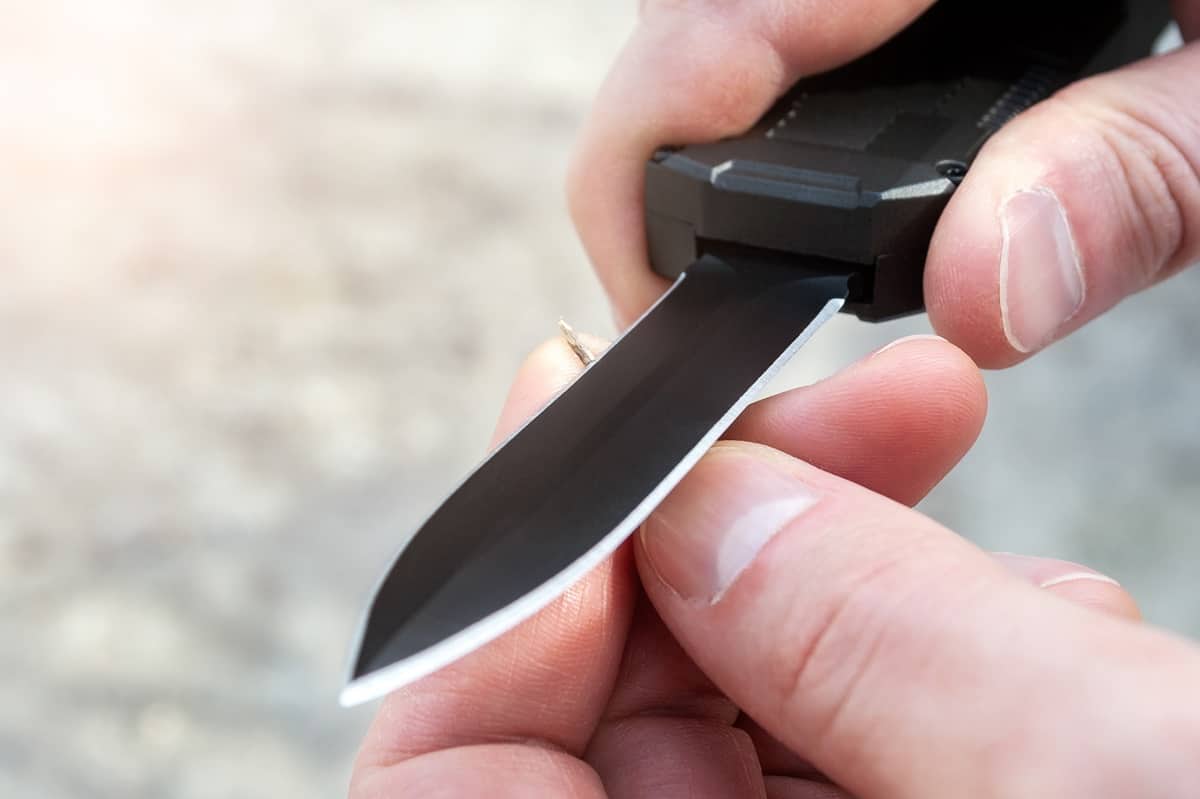How to sharpen a pocket knife is explained in this article. It’s like having a gun without bullets to owning a knife with a dull blade! These days’ high-tech knives are usually insanely sharp right out of the box.
There are many knives that will keep their edge for years. but that depends on how they’re used and how much abuse they’ve been subjected to. You’ll need to sharpen every knife eventually if you want it to stay effective.
There are a variety of methods and forms of knife sharpening available today. There are many how-to guides and videos explaining different sharpening methods, as well as a wide variety of products available. You can find everything from cheap $5 gadgets to high-end machines that cost over $1000.
Ultimately, what is best for you depends on what feels comfortable and confident to you when sharpening your knife. It is also important to note that not every type of sharpening method is suitable for all knives. When it comes to caring for and maintaining knives, they are unique instruments.
As a result, we provide the information below aimed at your daily carry pocket knives, which don’t require advanced knife handling skills.
The Best Way to Sharpen Your Pocket Knife
1. Make your selection
To begin with, there are a variety of tools available for sharpening knives. Smith’s PP1 or Lanksy BladeMedic are handheld travel sharpeners that you can use.
It is also possible to buy a more luxurious sharp maker set, such as Spyderco’s Tri-Angle Sharpmaker Set. Wicked Edge’s GO knife sharpener has been tested and loved by us.
When sharpening, these tools assist you in maintaining the angle of the edge. A sharpening stone can also be used.
A 1,000-grit whetstone is recommended by professional knife sharpener Peter Nowlan. Ideally, coarse-grit sharpening stones are used on very dull blades, and fine-grit stones are used when honing them.
Water or mineral oil may be required to lubricate some stones (whetstones); others do not. In any case, read the instructions carefully, as every tool differs slightly.
2. Knife cleaning
Cleaning your knife is a good idea right now. To remove dirt, grease, or any other residue from the blade, use soap and water. Ensure that it is completely dry. When sharpening a blade, it’s also important to make sure that there are no nicks or scratches.
3. Get your edge angle
A knife’s edge angle is different from knife to knife. Unless you want to completely re-profile the knife, you should aim to match that angle when sharpening.
The Swiss Army knife manufacturer Victorinox recommends sharpening at an angle of 15 to 20 degrees on both sides. The Sharpmaker from Spyderco has an angle of 15 or 20 degrees.
Contact the manufacturer or check your owner’s manual if you want to keep your knife’s original angle. Sharpening stones should be marked along the edges before sharpening, according to experts, like Buck Knives. By doing this, you can determine the right angle after removing all the ink after a couple of sharpening strokes.
4. Sharpen your pocket knife
Your sharpening tool should come with instructions on how to use it. You need to run the blunt edge of the blade along a sharpening stone like you are trying to shave off slices of the stone. Ensure the blade is in contact with the entire length of your hand with a sweeping motion.
Since pocket knives tend to have shorter blades than larger knives, this is much easier to accomplish. It may take you a different method to sharpen your knife, but the objective is to resurface the edge of your knife using the abrasive material.
“It’s best to hold the knife with a very light grip and low pressure,” said Bill Raczkowski from the American Knife & Tool Institute.
It is important to hold the angle consistently and consistently apply pressure to the stone. It’s time to switch sides when you notice a burr of metal along the blade (more details below).
5. If you need finer grit stones, start with coarse ones
There are usually multiple stones included with handheld sharpening tools. If your blade is dull or sharp, you should start with a coarse-grit stone, then progress to a finer grit stone.
It may not be necessary to sharpen your pocket knife every time with the coarsest stone. You can skip this step if you keep your blade sharp with regular maintenance.
6. Make your blade sharp
In most cases, you should start by taking care of your blade at this stage. Fine-grit stones (such as ceramic stones) can be sharpened in the same way.
7. You should strop your blade
The knife enthusiast swears by this step, although it is not required. Finish polishing the blade with a piece of leather and polishing compound. Remember to keep the knife’s edge away from the leather’s edge so that it doesn’t cut it or dull it.
Besides sharpening your knife on a regular basis, stropping it can keep the edge of your knife sharp for a longer period of time.
8. Make sure the blade is sharp with paper
There should be no hangups or tears when cutting through magazine paper with a knife. It’s likely that a particular part of the blade needs additional attention if it gets stuck.
FAQs
What Is the Best Time to Sharpen My Pocket Knife?
When you begin to notice that your knife is losing its cutting ability, it’s time to sharpen it.
Knives that are dull are dangerous knives. Sharpen yours before you have difficulty cutting objects.
When Sharpening a Pocket Knife, How Long Does It Take?
Even by hand, you can sharpen your pocket knife in a few minutes.
